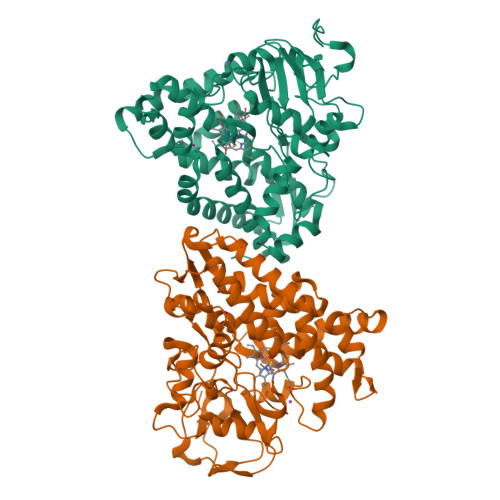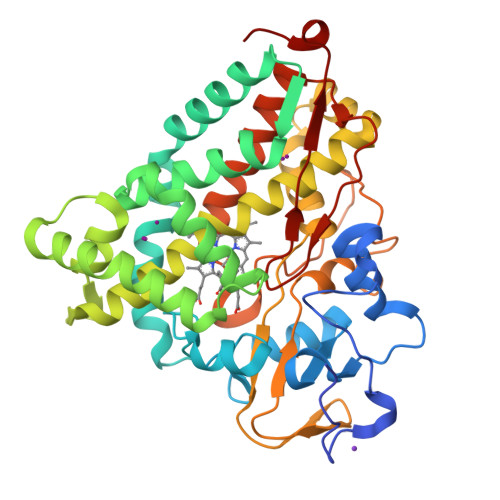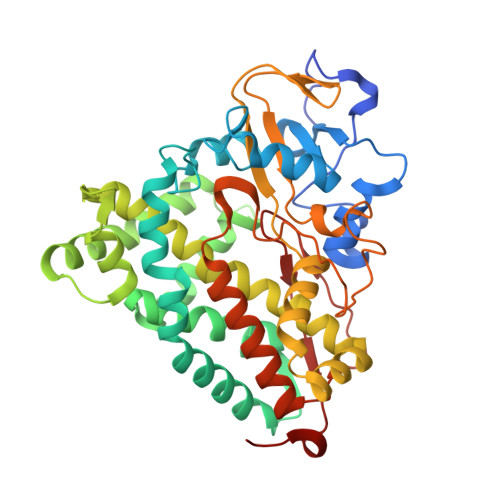A Survey of Active Site Access Channels in Cytochromes P450
Wade, R.C., Winn, P.J., Schlichting, I.(2004) J Inorg Biochem 98: 1175
- PubMed: 15219983
- DOI: https://doi.org/10.1016/j.jinorgbio.2004.02.007
- Primary Citation of Related Structures:
1UYU - PubMed Abstract:
In cytochrome P450s, the active site is situated deep inside the protein next to the heme cofactor, and is often completely isolated from the surrounding solvent. To identify routes by which substrates may enter into and products exit from the active site, random expulsion molecular dynamics simulations were performed for three cytochrome P450s: CYP101, CYP102A1 and CYP107A1 [J. Mol. Biol. 303 (2000) 797; Proc. Natl. Acad. Sci. USA 99 (2002) 5361]. Amongst the different pathways identified, one pathway was found to be common to all three cytochrome P450s although the mechanism of ligand passage along it was different in each case and apparently adapted to the substrate specificity of the enzyme. Recently, a number of new crystal structures of cytochrome P450s have been solved. Here, we analyse the open channels leading to the active site that these structures reveal. We find that in addition to showing the common pathway, they provide experimental evidence for the existence of three additional channels that were identified by simulation. We also discuss how the location of xenon binding sites in CYP101 suggests a role for one of the pathways identified by molecular dynamics simulations as a route for gaseous species, such as oxygen, to access the active site.
Organizational Affiliation:
Molecular and Cellular Modeling, EML Research, Villa Bosch, Schloss-Wolfsbrunnenweg 33, 69118, Heidelberg, Germany. rebecca.wade@eml-r.villa-bosch.de























